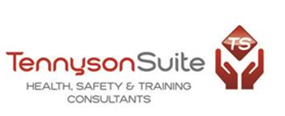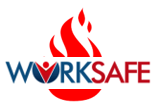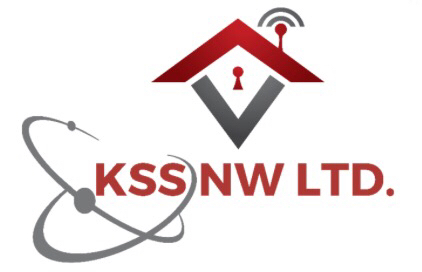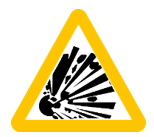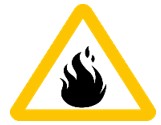Title Page
-
Site conducted
-
Conducted on
-
Prepared by
-
Location
Risk Category Standard - Explosive Material
Responsibilities
-
Who is the Risk Owner of this risk category?
-
Who is the Control Owner of the risk category?
-
Who is the Risk Executer of this risk category?
-
Who is the Task Executers of this risk category?
Competencies
-
Is the Risk Owner trained and competent to manage this risk category?
-
Is the Risk Control Owner trained and competent to manage this risk category?
-
Are the Risk Exacters trained and competent to manage this risk category?
-
Are the Task Executers trained and competent to manage this risk category?
Appointments
-
Is the Risk Owner appointed to conduct his/her duties? (WAH Planner, risk assessor.....)
-
Is the Risk Control Owner appointed to conduct his/her duties? (WAH Planner, risk assessor.....)
Risk Management Requirements
Adhere to legislation that is in place such as the explosives license for the danger area (explosives workplace):
-
This license is issued by the authorities.
-
It stipulates the specific activities, type (classification) and quantities of explosives that will be manufactured, handled<br>and stored, used or tested in the danger area.
-
This will also include the maximum number of people permitted in the manufacturing building
-
-
Obtain explosive specific rules and regulations from existing AECI explosives plants and it must be adhered to. Also refer to<br>the AECI technical custodians if any more information is needed.
-
Ensure risk assessments are done by an approved authority (e.g. AIA) to manage the risks in the danger areas as per the<br>in-country legislation.
-
Design of danger buildings and storage areas must be optimal to prevent or reduce the risks (e.g. blast walls). Ensure integrity of<br>these buildings is maintained by conducting statutory inspections.
-
Ensure operational standards, procedures, instructions, processes and technical data (e.g. Basis of safety, Safety<br>Data Sheet, SAFEX) for explosives and flammable material are in place, updated, available and workers are trained on it.
-
Ensure explosive waste management and disposal procedures are in place to deal with explosive waste safely and in an<br>environmentally safe manner.
-
Ensure that workers are trained and competent, appointed and authorised as per in-country legislation.
-
Ensure emergency response systems are in place to appropriately respond or react to incidents.
-
Where applicable, ensure contractor management is followed.
-
Refer to the Product transportation, Process safety, Electrical, Structural integrity and Product quality risk category standards<br>if the work includes anything relevant.
Minimum Critical Controls
Explosive Materials
-
Apply ignition source control or eliminate sources of ignition (FISH — Friction, Impact, Static, Heat and decomposition).
-
Decontaminate process areas and equipment prior to handover for maintenance and repair activities.
-
Earthing and bonding must be done to prevent the build-up of static electricity where applicable.
-
Ensure that chemical compatibility are adhered to when entering any sensitive explosives area (refer to compatibility charts).
-
Ensure safety interlocks and trip systems are in place and operational where applicable; statutory inspections must be conducted.
-
Conduct quality verification of raw materials and quality checks or tests on outgoing products on regular basis.
-
Apply proper storage methods and maintain good housekeeping in danger areas.
-
Conduct emergency response as per risk assessment.
Control or Eliminate Source of Ignition
Friction
-
Ensure that your working surfaces are kept clean and free from grit whenever possible (grit sensitises explosives).
-
Eliminate movement of materials over each other that can cause a friction event.
Impact
-
Do not drop explosives, handle it with care.
-
Any forcible contact with another object should be avoided.
Static
-
Report and repair loose earthing on equipment.
-
Ensure humidifiers are in place and working to eliminate static buildup.
-
Make sure that the correct clothing is worn according to the PPE standards.
Heat
-
Report and repair any sources of heat, e.g. overheating motors, slipping conveyor belts.
-
Avoid open flame work as far as reasonably practical.
-
Energetic materials can be easily ignited by any source of flame.
Decomposition
-
Do not store or mix incompatible materials as this can create a source<br>of ignition.
Decontaminate Process Areas & Equipment
-
Always adhere to the Decontamination Operating Procedure or Instructions.
-
Only trained, competent and authorised workers are permitted to carry out decontamination procedures.
-
The worker needs to identify the contaminants and understand the nature of it by referring to the Safety Data Sheets (SDS).
-
Verify the parts which may have explosives trapped in cavities e.g. valves by following the testing procedures.
-
Select the applicable method of decontamination, disposal method for the effluent and the appropriate PPE.
-
Always record the details of the decontamination undertaken.
-
Make sure that a Decontamination Certificate is issued for every piece of equipment leaving the explosive area.
Earthing & Bonding of Conductive Surfaces & Tools
-
All metal structures, surfaces and equipment in explosive areas must be properly earthed and testing is done as per in-country legislation.
-
Make sure that all earth bonding points are in a good condition and are properly secured.
-
Conductive flooring must be installed and maintained in all areas where sensitive explosive materials are manufactured, handled and stored. Conductive flooring works in conjunction with conductive footwear. Conductive flooring must be checked and tested as per explosive regulation.
-
All non-metal materials in sensitive explosive areas must be constructed off anti-static OR conductive materials where possible as per risk assessment. This includes e.g. tools and cleaning equipment.
-
Ensure that all flange joints where gaskets are fitted, has earth jumpers installed to ensure proper earthing.
-
Workers shall wear conductive PPE (incl. clothing and shoes) where conductive flooring is installed. When entering areas where sensitive explosive materials are manufactured, handled and stored, the minimum standard should be anti-static PPE.
-
All buildings where explosives are manufactured, handled and stored must be covered by appropriate lightning conductors. This must also be tested as per in-country legislation.
-
Before entering a building with conductive flooring, test your shoes for conductivity using a suitable tester.






